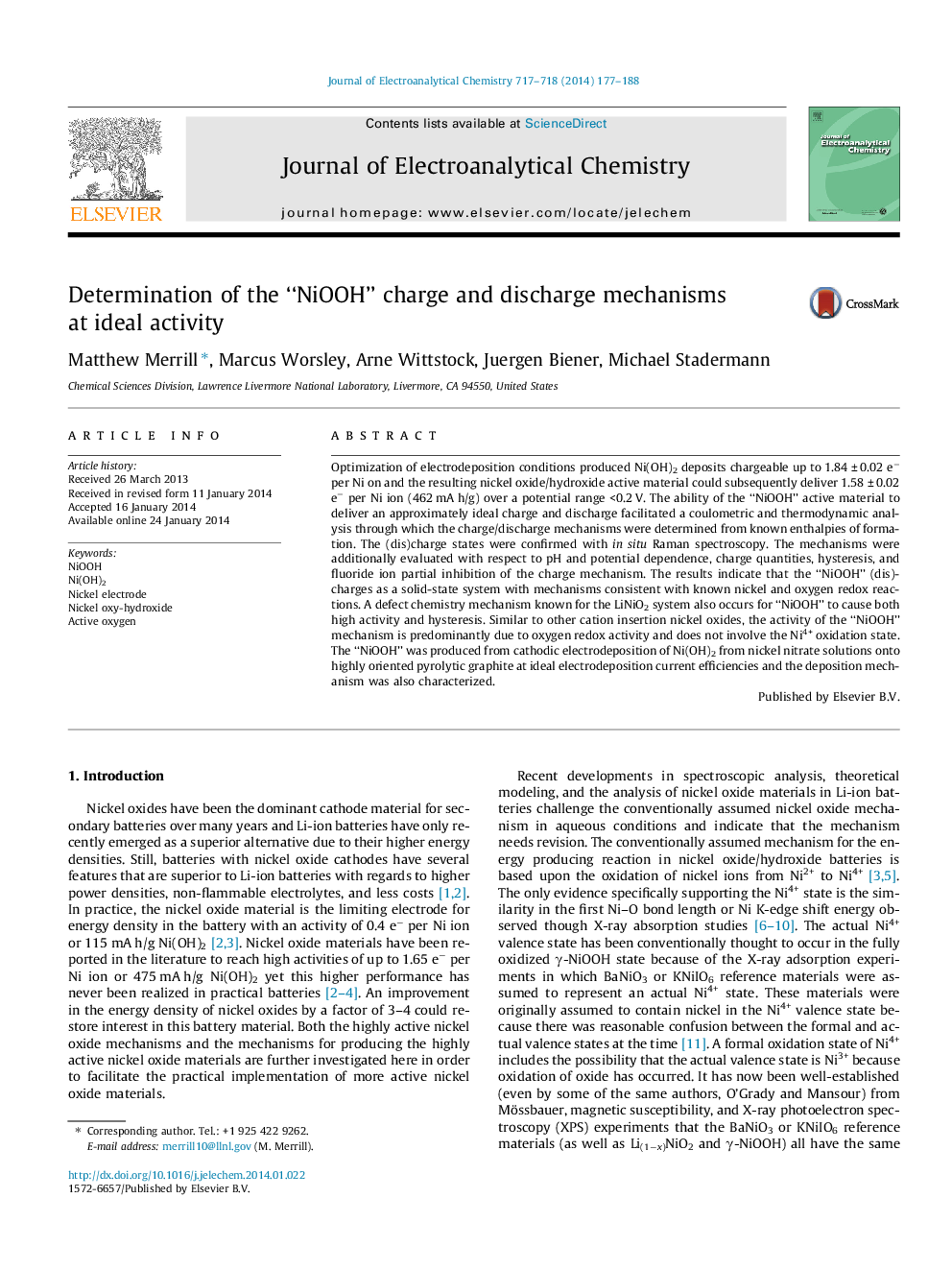| Article ID | Journal | Published Year | Pages | File Type |
|---|---|---|---|---|
| 6662689 | Journal of Electroanalytical Chemistry | 2014 | 12 Pages |
Abstract
Optimization of electrodeposition conditions produced Ni(OH)2 deposits chargeable up to 1.84 ± 0.02 eâ per Ni on and the resulting nickel oxide/hydroxide active material could subsequently deliver 1.58 ± 0.02 eâ per Ni ion (462 mA h/g) over a potential range <0.2 V. The ability of the “NiOOH” active material to deliver an approximately ideal charge and discharge facilitated a coulometric and thermodynamic analysis through which the charge/discharge mechanisms were determined from known enthalpies of formation. The (dis)charge states were confirmed with in situ Raman spectroscopy. The mechanisms were additionally evaluated with respect to pH and potential dependence, charge quantities, hysteresis, and fluoride ion partial inhibition of the charge mechanism. The results indicate that the “NiOOH” (dis)charges as a solid-state system with mechanisms consistent with known nickel and oxygen redox reactions. A defect chemistry mechanism known for the LiNiO2 system also occurs for “NiOOH” to cause both high activity and hysteresis. Similar to other cation insertion nickel oxides, the activity of the “NiOOH” mechanism is predominantly due to oxygen redox activity and does not involve the Ni4+ oxidation state. The “NiOOH” was produced from cathodic electrodeposition of Ni(OH)2 from nickel nitrate solutions onto highly oriented pyrolytic graphite at ideal electrodeposition current efficiencies and the deposition mechanism was also characterized.
Related Topics
Physical Sciences and Engineering
Chemical Engineering
Chemical Engineering (General)
Authors
Matthew Merrill, Marcus Worsley, Arne Wittstock, Juergen Biener, Michael Stadermann,
